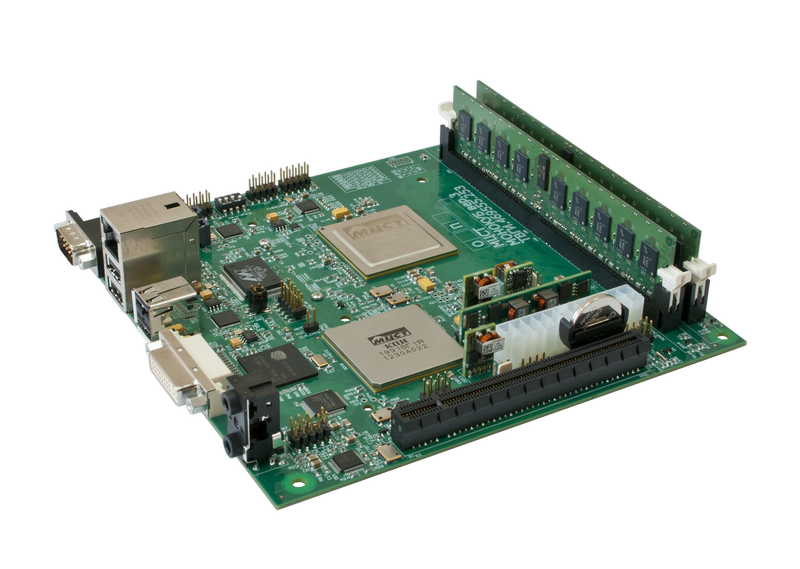MCST will produce a motherboard and an operating system for the Elbrus-2CM processor

MCST.ru
MCST announces plans for the production of the Monocub-M compact motherboard, the core of which is the Elbrus-2SM processor, manufactured by NIIME and Micron OJSC using 90 nm technology. So far, only pilot production of motherboards based on the first Russian dual-core processor has been launched.
On the mini-ITX form factor board, there are many pins: a bus for installing PCI-Express 1.0 expansion cards, gigabit Ethernet, USB 2.0, VGA, DVI, SATA 2.0, IDE (CompactFlash), RS-232, and common output pins (GPIO) .
The payment was not created from scratch, "Monokub-M" is a derivative of the own development of the MCST " Monokub ". Skeptics can see in the photos two chips with logos of California companies Silicon Motion and Marvell .
')
" Elbrus-2SM " or "Elbrus-1C" (the internal name that can be seen on the label) is a revised version of the "Elbrus-2C +". 2CM has 2 DDR2-533 channels with a built-in memory controller, 2 cores and 2 megabytes of the second-level cache - per megabyte per core. The processor communicates with external devices using a south bridge called the “ peripheral interface controller ”, which is also a development of the MCST.
The clock frequency is 300 MHz. The operating temperature range is in the range of −40 ° to + 85 ° C. The peak performance of the chip is 12 billion operations per second . Declared "high performance in problems of digital signal processing and mathematical calculations."
This is a completely Russian processor: the instruction set, architecture, circuitry, blocks and topology were developed in Russia. The device is manufactured at the NIIME and Micron factory in Zelenograd.

MCST.ru
The processor is useless without a motherboard, and a computer with a new architecture built on its basis is without an operating system supporting it. It is promised that based on the domestic Elbrus operating system, it will be possible to create computers, all-in-one computers, mini-servers and data warehouses with a high degree of protection from information attacks - there can be no foreign hardware or software bookmarks in the product. It is also important that the processor is manufactured at Russian capacities, which helps to cope with the sanctions pressure.
The Elbrus operating system is based on the Linux kernel version 2.6.33 , it implements the necessary security standards, multitasking and multi-user mode. By reworking the libpthread library into elpthread, real-time operation was achieved. The latter means the ability to control various automatics, for example, on-board electronics of a vehicle or a robot.
New items will show early next year. The cost is not reported yet, but one should not expect prices for electronics for wide consumption - only small experimental batches are produced.
The next generation of Elbrus processors will increase productivity and reduce technical process. For example, by November 2018, it is planned to develop an Elbrus-16C with 8 or 16 cores, a technical process of less than 20 nm and a capacity of 1 Tflops. By 2020, it is planned to develop a 32-core microprocessor with a clock frequency of up to 2 GHz and with a capacity of 2-4 Tflops based on 14 nm technology.
Source: https://habr.com/ru/post/368223/
All Articles